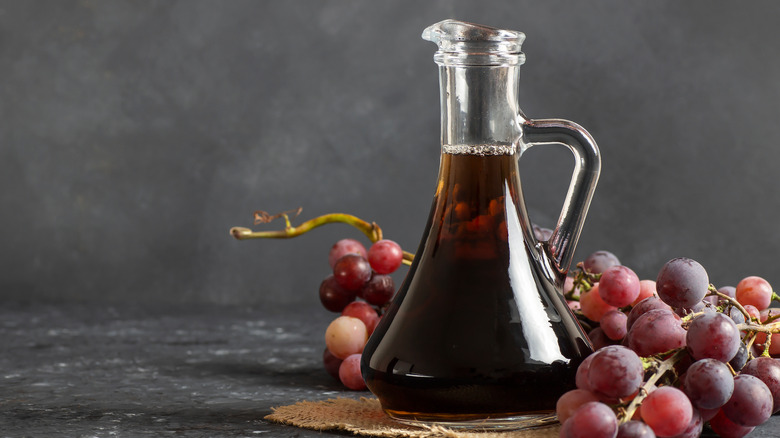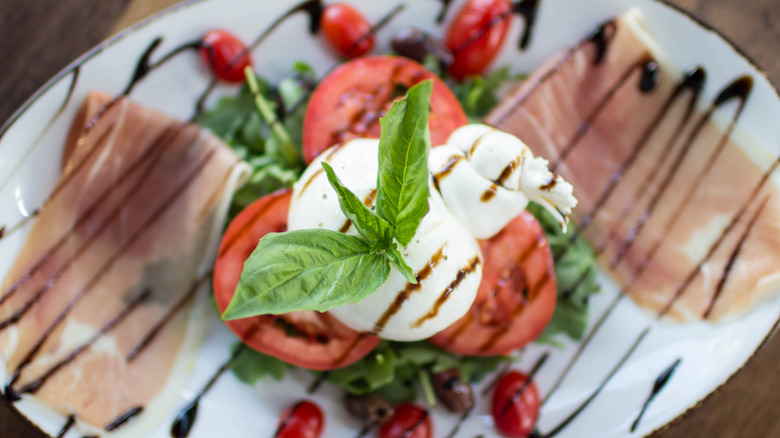What Happens If You Boil Balsamic Vinegar?
Rich and complex, balsamic vinegar is multifaceted. While you may have previously left the vinegar to be used as a sweet and tangy addition to garden salads and maybe the occasional Caprese, balsamic vinegar is super versatile — especially if you boil it.
Most commercially available balsamic vinegars have more astringency than tartness compared to traditional balsamic vinegar. Known as the "black gold" of Modena, Aceto Balsamico Tradizionale di Modena DOP is among the best balsamic vinegars in the world due to its extensive aging process, explains VisitModena. Grape must is left to mature and naturally ferment in wooden casks for upwards of 12 years, allowing the balsamic to become thick and more concentrated in sweet, smokey flavor.
Since an aceto balsamico aged 25 years will undoubtedly be a sweet and syrupy wonder, it's also significantly harder to find and much pricier. That said, balsamic glaze acts as a willing substitute. Acetaia Sereni explains that while traditional balsamic and balsamic glaze may have a similar color, texture, and taste, balsamic glazes don't rely on strenuous aging processes but instead offer a faster (and cheaper!) alternative.
Boiling balsamic creates a thicker, sweeter sauce
According to Love & Lemons, boiling balsamic vinegar will create a balsamic glaze. Also known as a reduction, when the thin vinegar is brought to a boil and then simmered, water evaporates, leaving a more concentrated flavor and thicker texture similar to good quality balsamic that's been aged for years. With an intense aroma and flavor profile, the reduced balsamic still has an acidic kick but a softer and sweeter complex finish, recalling notes of cherry and prunes.
Although you can easily find balsamic glazes in the supermarket, Downshiftology warns that they might contain additives like glucose syrup, caramel coloring, and xanthan gum. To ensure the best quality, making your own reduction is the best way to go. All that's required is moderately priced balsamic vinegar and a pot to reduce it. Of course, you're also free to customize your reduction by adding more sweetness or infusing the syrup with herbs and spices to add more depth.
The ideal condiment to drizzle on just about any dish you can think of, Taste of Home recommends using boiled balsamic reduction as a finishing sauce for roasted vegetables, grilled meats, fresh salads, pizza, pasta, soups, risotto, and even polenta dishes. Since it does boast a certain sweetness, balsamic reduction can even be used in desserts as the perfect topping for ice cream, chocolate cakes, and fresh or grilled fruit!

